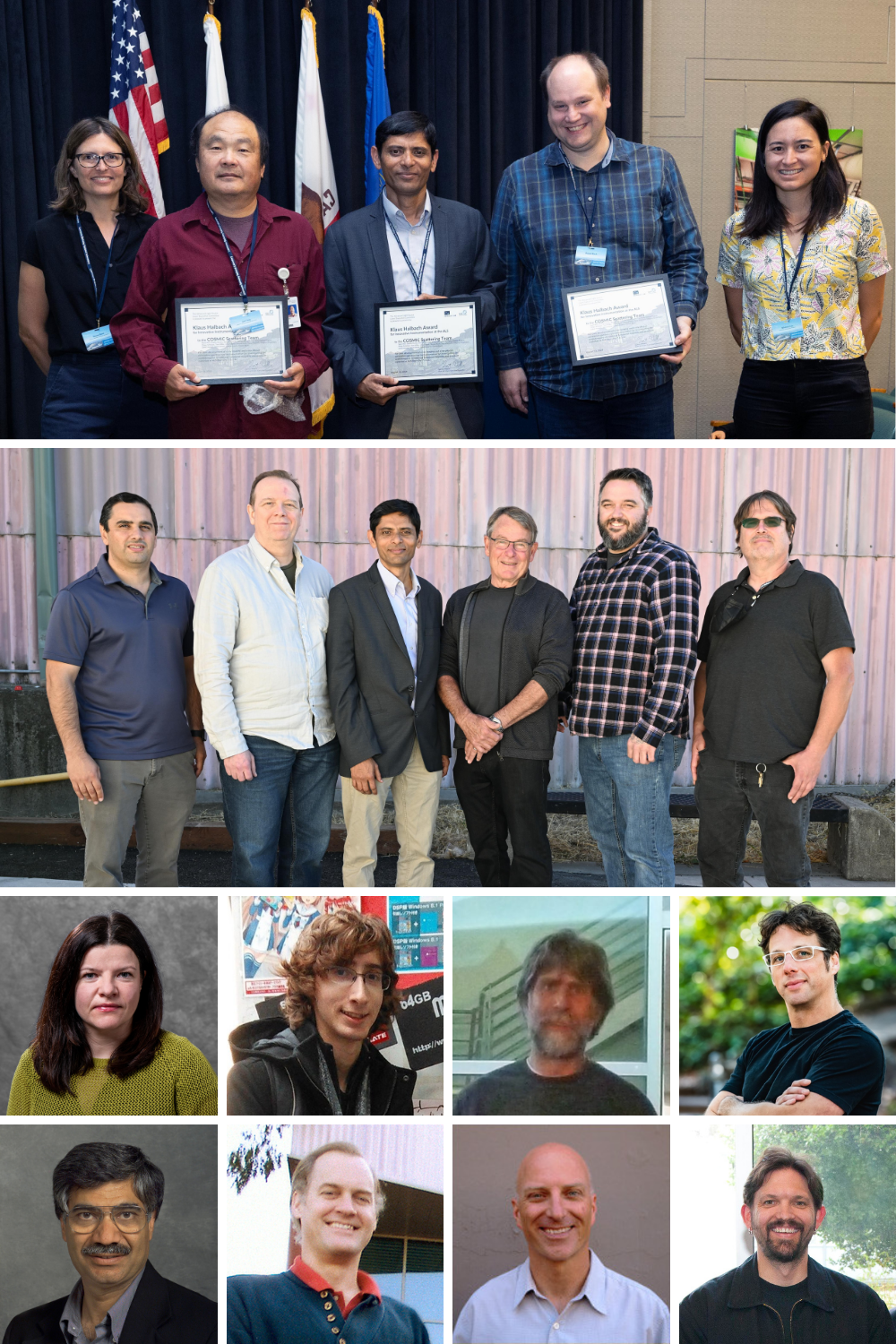by Cindy Lee

Sujoy Roy and the COSMIC Scattering Team received the 2024 Klaus Halbach Award for Innovative Instrumentation at the 2024 User Meeting. In addition to Roy, the members of the team are: Sophie Morley, Ronald Pandolfi, Adrian Williams, Lee Yang, Damon English, Diego Arbelaez, Tom Miller, John Pepper, Roland Koch, Tony Warwick, Gregory Scharfstein, Zahid Hussain, Steve Kevan, Robert Duarte, and Dennis Baum. The Users’ Executive Committee recognized them “for the development of x-ray imaging and x-ray photon correlation spectroscopy instrumentation for investigating the spatiotemporal dynamics of functional magnetic and quantum materials at ALS Beamline 7.0.1.1.”
We chatted with Roy to learn more about this achievement.
What advancement does the COSMIC Scattering beamline represent?
We first have to talk about synchrotrons before and after coherence, and that directly links to ALS-U [the ALS Upgrade]. When we had no coherent beam—well, very little—we were doing all kinds of interesting and exciting experiments that took advantage of the energy, polarization, or circular polarization of the beam. That’s why we have ARPES [angle-resolved photoemission spectroscopy], imaging, and XMCD [x-ray magnetic circular dichroism], all very cool and powerful spectroscopic techniques.
With coherence, now we have a new degree of freedom (coherence) to look at data. So, we needed a way to do coherent x-ray scattering experiments. With this endstation, we’re doing resonant coherent x-ray scattering. Soft x-rays provide magnetic and electronic sensitivity, and coherence provides temporal sensitivity. It will also be part of the new FLEXON beamline.
How will the beamline use coherent light?
This is a state-of-the-art, ultra-high-vacuum (UHV)-compatible endstation for x-ray scattering using coherent beam. You get coherent beam by putting in a pinhole in the beampath, so we have pinholes that can move with sub-20-nanometer precision, a low-temperature sample environment, and an in-situ-vacuum compatible magnet. With this endstation, we will be able to do coherent x-ray scattering on a variety of quantum materials. That’s one of the important techniques to be deployed at the upgraded ALS.
It’s a tool for quantifying heterogeneity and correlations. Everything is correlations! Molecules are gas; you correlate them, make them a lattice, and they become a crystal. When you correlate spins, you create a magnet. Correlation is a big part of physics and materials. As a tool for determining correlation—time correlation, field correlation—this endstation will have an enormous impact on basic science.
How did you develop an interest in this field?
I did my postdoc with Sunny Sinha, the world’s best x-ray scattering mind. He was involved in developing hard x-ray XPCS [x-ray photon correlation spectroscopy] at the Advanced Photon Source. He met Steve Kevan, learned that they were doing soft x-rays at the ALS, and asked if I’d be interested in working on speckles. So, I came to the ALS as a user in 2005 and got a speckle pattern from a magnetic thin film. We couldn’t go much further without coherence, but we were very ambitious.
The coherence part started before me! First, Mark Sutton published a paper on coherence in 1991, and in 1999, Steve Kevan did an experiment on liquid crystals with Larry Sorensen and Jeff Kortright at Beamline 9. Even with poor coherence, they got marvelous results. Steve talked with Zahid Hussain, and they came up with Beamline 12.0.2.2 as a sandbox beamline. Then, the ALS hired me to champion this kind of science. I remember Steve telling me in the dead of the night, “If you want to come with me to do this experiment, it may be a failure, or it may be a success. Is that okay with you?” I said, “Yeah, I am somebody who likes to do hard experiments.”
That’s how we started, and immediately afterward, COSMIC was funded, because it was obvious that we couldn’t have a user program at 12.0.2.2, which didn’t have circular light. We got funding from DOE for two branchlines and two endstations, one of which was the COSMIC endstation. It took a long time to build.
Looking back, Mark Sutton wrote in his paper that speckles are good for finding order parameters. Steve’s paper predicted the possibilities with 1000 times more flux. I am amazed that I have had the fortune to work with Mark, Steve, and Sunny. They had the vision, and I kind of took up the challenge.
Who was involved in building COSMIC Scattering?
Many people came and went over the years. Zahid and I did the first sketch with input from Steve. We started talking with Rob Duarte, and he and Dennis Baum started working on it. Tom Miller designed the sample holder, John Pepper did the cryogen part. Diego Arbelaez designed a unique magnet. It’s a UHV-compatible, four-dewar superconducting magnet. None of these parts were available on the market; the team created them specifically for this project. Tony Warwick worked on the beamline, and helped find the endstation spot. Duarte and Baum left, but Greg Scharfstein came, and together with Don MacGill’s team, he put together the endstation in Building 15. Adrian Williams took charge of installing the magnet, then Sophie, Tony, Roland, and I commissioned the endstation.
Besides x-ray scattering, what else interests you?
I’m a big supporter of diversity, particularly women in science. My wife is a scientist at Berkeley Lab. My two daughters might become scientists. I also like Indian classical music. I was trained to sing, and in the evenings, it’s a nice thing to do. It’s therapeutic.